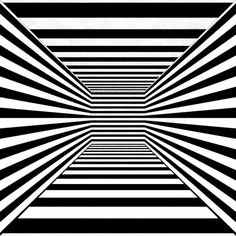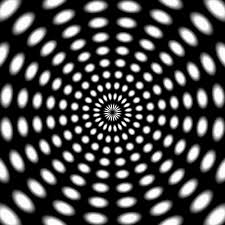|
LITR 4368 Literature of the Future |
Sample answers
for Essay 1:
|
 |
Clark Omo
Tech in Connection: The Similarities of Low Tech, High Tech, and
Ecotopias
Through the course of this semester, we have studied multiple scenarios
regarding the narratives of Literature of the Future. We have studied Evolution,
Creation\Apocalypse, Alternate Futures and Realties and so forth. As we have
discovered, each of these narratives, though different in execution and
practice, each contain similarities and connections that qualify their
classifications as narrative for Literature of the Future, as well as lend to
them each a storytelling bond. This bond, while simultaneously acknowledge the
unique aspects to each narrative, reveals the structure as well as the singular
purpose that each narrative is built around. Same is true for studying the
latter narratives covered in this class: Low Tech, High Tech, and Ecotopia. All
three of these narratives, like the ones before them, share a bond amongst their
narrative purposes. That bond hinges on how they treat technology and its
importance to the human race, as well how either its overwhelming and violating
control, sudden and complete absence, or harmonic balance with nature can spell
either doom or success for the future. But all as one acknowledge that
technology is crucial to the human experience, and that, if not monitored, could
lead to disaster for us all.
For
the first scenario, the Low Tech Narrative, a definition must be provided.
According the course’s webpage, the Low Tech narrative “encourages re-engagement
with actual reality, particularly
biological human existence”. This is true, as Low Tech stresses the dangers of a
future where technology has become overabundant and invasive, and thus returns
to a setting where humans have rediscovered their connections with nature, or
are forced to. The latter is true in the short story “The Logical Legend of
Heliopause and Cyberfiddle”. The state of human society in this story is one of
complete domination by technological advances. So much to the point that
physical descriptions for the characters have been abandoned in place of terms
such as “chambered, neuro-jacked, hard-wired” (Virtually
Now, 159). Technological terms are the only ones capable to describe a
person in this story: no mentioning of eyes, hair, physique, and such. There is
only the technology. And yet the technology cannot provide the answers that the
humans seek. They wish to travel through the stars, but standing in their way is
Heliopause; it will not let the humans pass (161). The protagonist, Pryer,
eventually finds the solution to this problem in the form of constructing a
violin. To do this, Pryer first must create steel tools (168), and then gather
wood (173). So, Pryer has resorted to relatively primitive means in order to
construct a rather primitive tool in order to overcome an immense problem that
technology cannot seem to solve. Referring back to the definition of Low Tech,
the connection to the earth is stressed in this story. Humans have ceased to use
tools made of minerals and earth, and instead have opted for their technology.
But when that technology fails, Pryer must go Outside, the realm which his
ancestors escaped from (172). Thus, reconnection to earth and the environment is
stressed in “The Logical Legend of Heliopause and Cyberfiddle”, where humans
must either resort to the physical and natural ways of those before them, or
remain confined to Earth and never fly beyond the sun.
And
while “The Logical Legend of Heliopause and Cyberfiddle” provides the necessary
example for the themes and stresses of the Low Tech Narrative, “Johnny Mnemonic”
provides a clear model for the themes of the High Tech Narrative with its
Cyberpunk storyline and setting. The course webpage defines the Cyberpunk
offshoot of the High Tech Narrative in that it “assumes the ongoing evolution of
computer technology under increasingly unregulated and state-less capitalism” .
This is very true in the story of “Johnny Mnemonic”, the titular protagonist of
which has had information vital to the Yakuza implanted in his brain. This
setting is one where technology has progressed to point where it can be utilized
to replace memories.
Such
a scenario is reflective of the fear that technology will one day become so
invasive that it can intrude upon the very aspects and essences of humanity.
Johnny even laments this reality, saying “And
one day I’ll have a surgeon dig all the silicon out of my amygdalae, and I’ll
live with my own memories and nobody else’s, the way other people do”. Johnny
yearns to be normal; to not have his body treated as a commodity. And this theme
runs throughout the story from beginning to end in the form of implants and
surgeries. Cosmetics are able to alter people’s complexions to the extent that
they can essentially change a person’s race, as well as implanting weapons into
one’s body. Human bodies are rendered to inhuman status; they are objects, able
to be spliced and preened in accordance to whatever desire so dictates. This is
concurrent with the theme of technological overload and oppression expressed in
“Cyberfiddle”. Like in “Cyberfiddle”, the advancements present in “Jonny
Mnemonic” have redefined what it means to be human, so much so that humanity is
under threat of being lost altogether. Human bodies are capable of being used as
data storage in “Johnny Mnemonic”, whereas in “Cyberfiddle” technology has
rendered humanity unrecognizable as well as inarticulable. As a result, Johnny
is forced to adapt and utilize his abilities to protect himself, while
simultaneously taking advantage of the information stored in him to make a
profit. High Tech, therefore, forces its characters to adapt to the advances of
the future, just as Johnny has, while Low Tech asks its characters to return to
the old ways to find the solutions, just as Pryer did.
And then there stands the scenario of Ecotopia, that succeeds in some ways of
balancing the ideas of Low Tech and High Tech to create a society that
recognizes both the necessities of technology, as well as its detriments. The
course webpage defines an Ecotopia as “a
community whose collective social health imitates nature’s interconnectivity”
Such is true in the story “Chocco”. In this story, the inhabitants of Chocco
have established a society reminiscent of the Native Americans. The speaker
relates the stories of Maya Melons and The Return of the Cliff-House Dweller’s
Springs (Future Primitive, 189).
Furthermore, when the conflict between Jon and Mikal begins (the two contenders
for the position of Memory Keeper, which the current speaker holds) the audience
is given a look back into the civilization dubbed as the Machine People who
lived long before people of Chocco. Both Jon and Mikal are asked to recount the
devastation that was wrought upon this civilization as well as the follies they
committed, such as the obsession with physical artifacts, lack of land for
recreation and agriculture, and lack of evidence for poetry (194).
This
history bears resemblance to the representations of technology given in both the
Low Tech and High Tech Narrative examples. As stated previously, technology in
both Narratives has either erased culture or transformed it to the point that
humanity possesses an almost alien definition. For the people of Chocco,
technology served to demolish civilization and decimate its purpose; and so, the
three are linked. This is not to say that the story of Chocco views advanced
technology as a complete terror; the people of Chocco still use it to a degree,
for the narrator mentions the use of solar collectors (190). It seems then that
Ecotopia does not admonish against the use of technology; rather, it asks its
characters, as well as its audience, to be aware that technology is capable of
eradicating society and culture, as well as altering human lives to the point of
uselessness if left unchecked, which is what has happened in both “Cyberfiddle”
and “Johnny Mnemonic”. Ecotopia strives to find balance, which is why in the
society of “Chocco”, the people still make use of technology insofar that it
does not overwhelm or threaten them.
Low
Tech, High Tech, and Ecotopia Narratives all have connections within their
stories. Low Tech focuses on the characters locating their more physical and
primitive roots in order to solve the problems created by technology. High Tech
presents the audience with characters that have chosen to adapt the tyrannical
demands of advanced technology, and hope through this adaption that they find a
solution. Ecotopia tries to balance the two and provide a world where advanced
technology has been rejected up to the point that its usefulness and purpose are
restored, and do not violated the whims of nature. All three narratives tackle
an issue very prevalent in the fears of the future: whether or not the final
advancements of technology will either result in utopia, or lead to world-ending
catastrophe.




